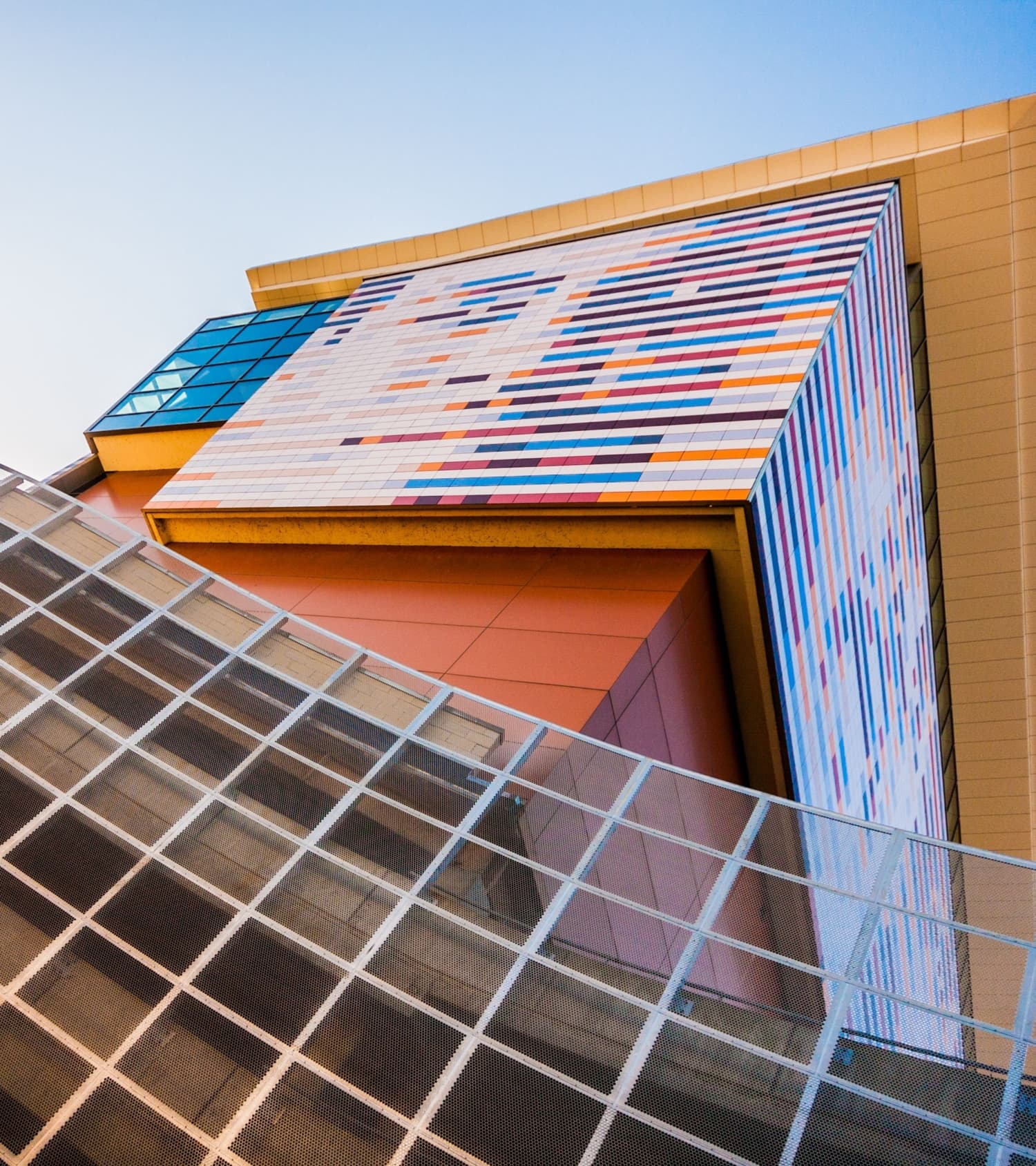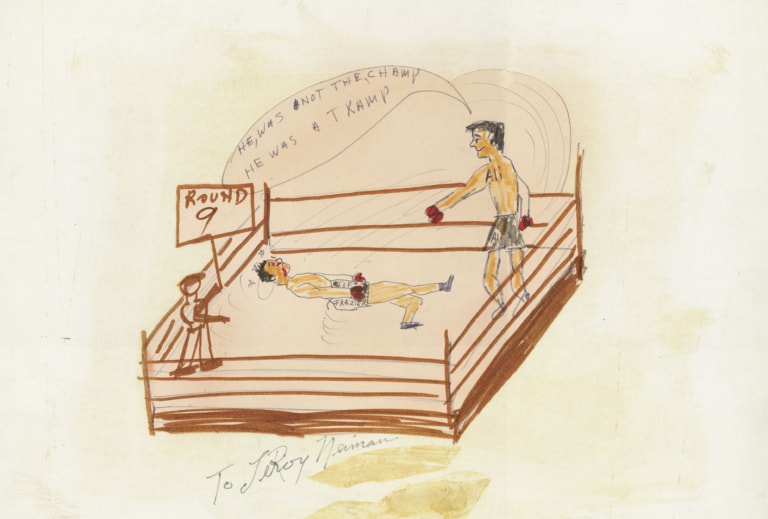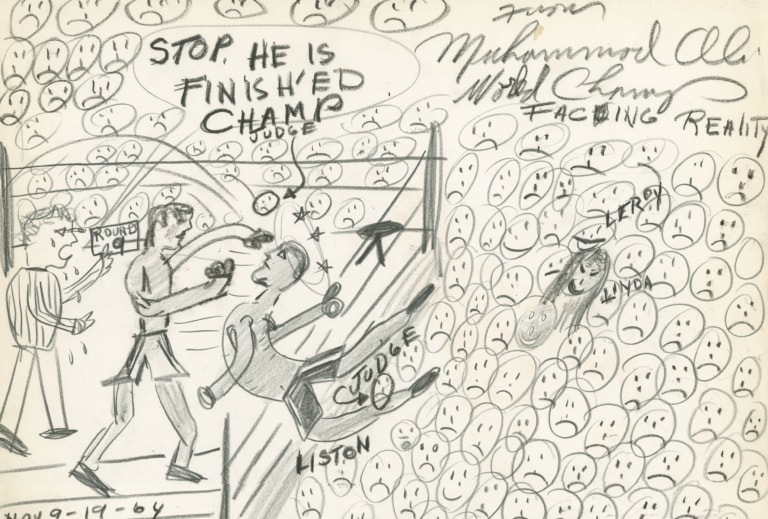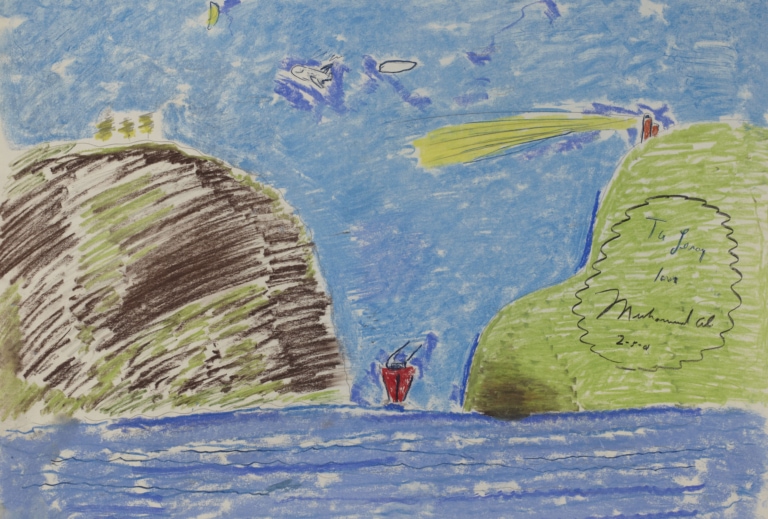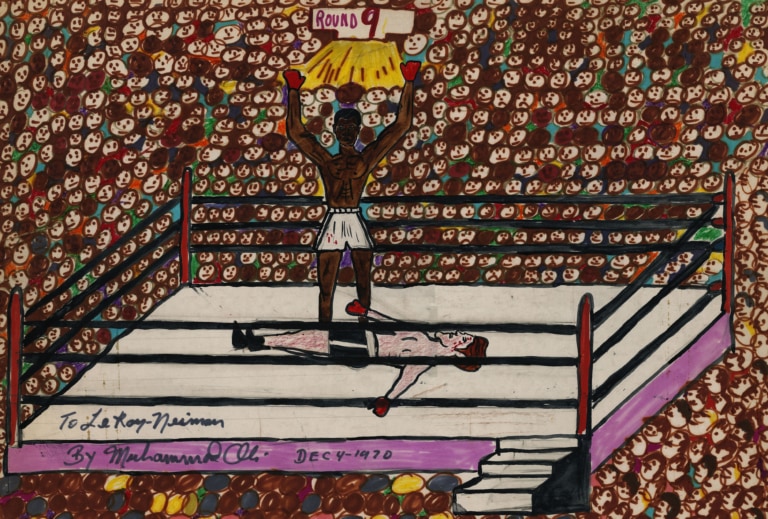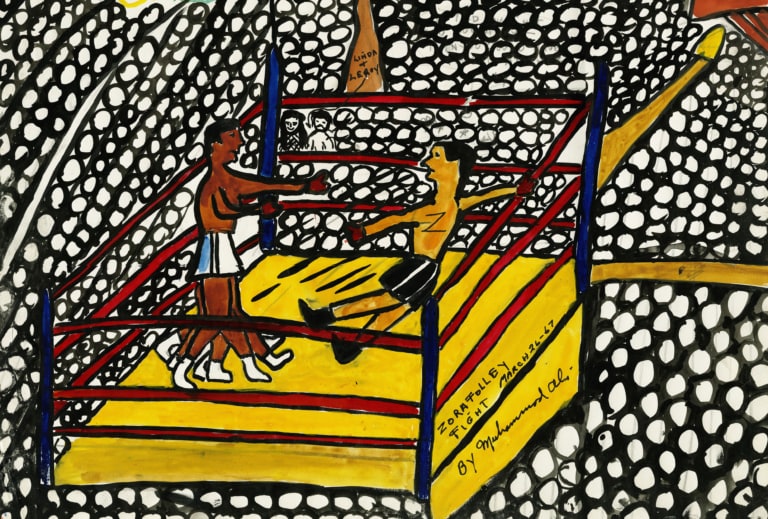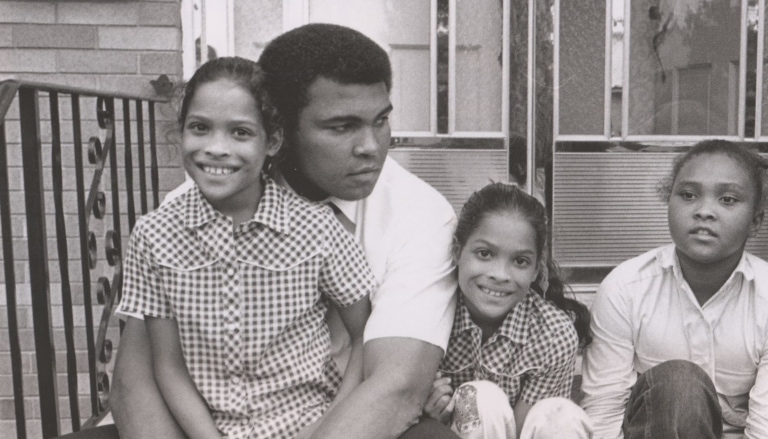Ali the Artist
Not only a pugilist, Muhammad Ali was a poet, painter, and patron of many art forms.
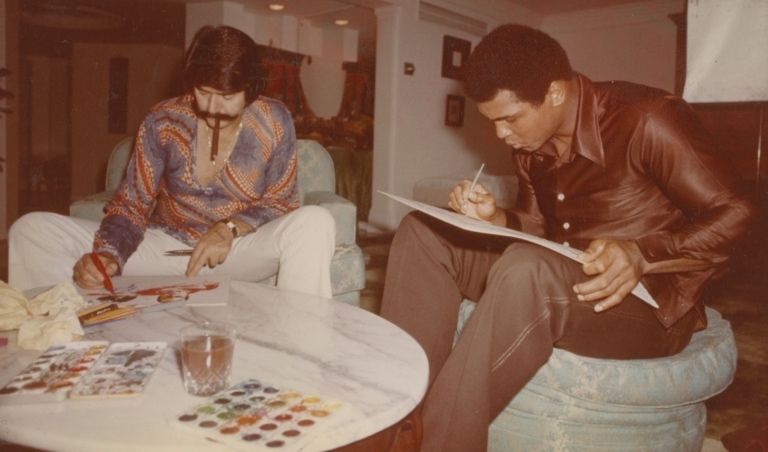

Like Father, Like Son
Muhammad Ali’s artistic talents and passion for creativity were evident throughout his life. His introduction to the world of art came from his father, Cassius Clay Sr., a sign painter and muralist who instilled a love for art in young Ali and his brother Rahaman. Even during his high school years, Ali showed preference for art and gym, suggesting his affinity for creativity and physicality.

Two Artists Unite
In 1962, Ali's artistic journey took a significant turn when he met LeRoy Neiman, a renowned artist known for his vibrant sports illustrations.
Ali and Neiman
Muhammad Ali resonated with LeRoy Neiman’s style, leading to the two developing a close friendship. Ali frequently visited Neiman’s studio in New York and Neiman was a regular member of Ali’s traveling entourage. Many of Ali’s works are inscribed to Neiman from Ali.
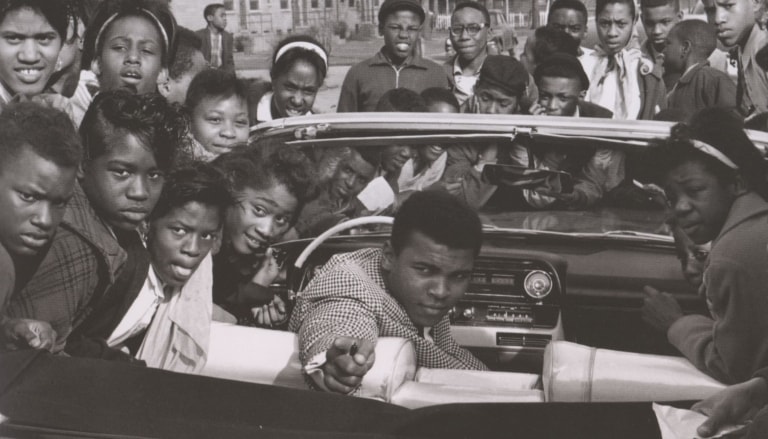
The Champ Meets His Photographer
When Muhammad Ali met photographer Howard Bingham in 1962, the two quickly became lifelong friends.

Ali and Bingham
Howard Bingham was another influential figure in Muhammad Ali’s life, both as an artist and as a close friend. Bingham was a photographer and journalist who became Ali’s personal photographer. He documented pivotal moments in Ali’s career, both inside and outside the boxing ring, offering a unique glimpse into his personal life. Ali and Bingham spent six decades of friendship that turned into family together.
Gaining Recognition
In 1968, his artworks exploring his beliefs of Christianity and in Islam were featured in the inaugural issue of Avant Garde magazine. Artists, including Andy Warhol, visited Ali’s training camp, Fighter’s Heaven, in Deer Lake, Pennsylvania, further emphasizing his connection to the art world.
In 1979, Ali was commissioned by the World Federation of United Nations Associations to create artwork for the organization. The resulting piece, titled “Let My People Go,” reflected Ali’s beliefs and encompassed themes of peace and understanding. The artwork was unveiled at the United Nations and marked the establishment of the Muhammad Ali Art Foundation for Peace.

Ali’s artistic pursuits also led to an exhibition at the Roseland Grand Ballroom in New York in January 1979. The exhibition showcased a collection of his artworks, offering the public a chance to experience and appreciate his unique artistic vision.
By the 2000s, Ali was still creating art. He frequently incorporated a recurring motif into his art – a large ship sailing between two vast land masses. It is possible that this held personal significance for Ali. It may have been that through art he found a possible avenue for self-expression, allowing him to communicate and express himself beyond the realm of boxing.
Muhammad Ali’s journey as an artist, influenced by his family, friendships with artists like LeRoy Neiman, and his personal beliefs and experiences, exemplifies his multifaceted interests and talents. His artwork continues to inspire and captivate, shedding light on a lesser-known aspect of his remarkable legacy.
